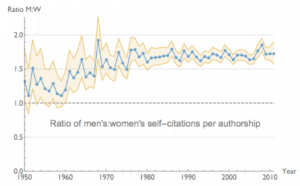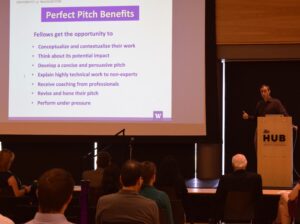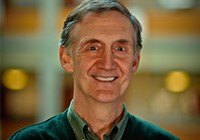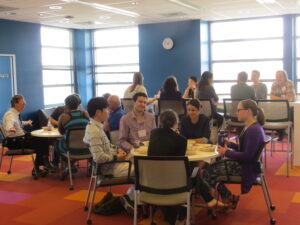-
Gender differences in self-citation

Molly King of Stanford University along with colleagues from NYU and the UW, including Data Science Fellow Jevin West, recently wrote a paper investigating differences in self-citation practices between men and women. Using over 1.5 million papers in the JSTOR database published between 1779-2011, they found that men self-cite 56% more often than women do.…
-
Traffic safety DataDive

In May 2016, the eScience Institute hosted a DataDive organized by DataKind and sponsored by Microsoft. The event followed a city of Seattle commitment to Vision Zero, an effort aimed at reducing traffic fatalities and serious injuries to zero. The data scientist volunteers who participated in this event worked on an exploratory analysis and modeling…
-
WRF Perfect Pitch & Poster Session a Success

By Robin Brooks The Washington Research Foundation (WRF) Perfect Pitch and Poster Contest was held on Tuesday, July 12th in the HUB South Ballroom. Participants from all four of the WRF-funded research institutes at the University of Washington competed in the event, which challenges contestants to improve their communication skills. All competitors conveyed their research visually through…
-
eScience Institute’s Ed Lazowska in the news

By Robin Brooks Ed Lazowska, eScience Institute founding director, has been featured recently in the press on a variety of science-related topics. Lazowska is quoted in the Wall Street Journal on Apple’s new “differential privacy” technology, as well as in the Puget Sound Business Journal on the need for expansion of UW’s computer science program. “Student interest in computer science is…
-
Nascent ImageXD event successful

By Robin Brooks The University of California, Berkeley Institute for Data Science (BIDS) recently hosted the inaugural ImageXD event, a topical group focused on image processing. ImageXD offered a unique opportunity for researchers who use images as a primary source of data to gather together to collaborate, problem-solve, network and learn new skills. A breakout session…
-
Viziometrics: a search engine for scientific images

While good graphics are considered a critical component of an effective scientific paper, literature search engines have historically been text or citation based. This week the MIT Technology Review highlighted the first visual search engine for scientific diagrams – Viziometrics. The team behind this pioneering project includes Electrical Engineering Ph.D. student Po-Shen Lee, iSchool professor and…




